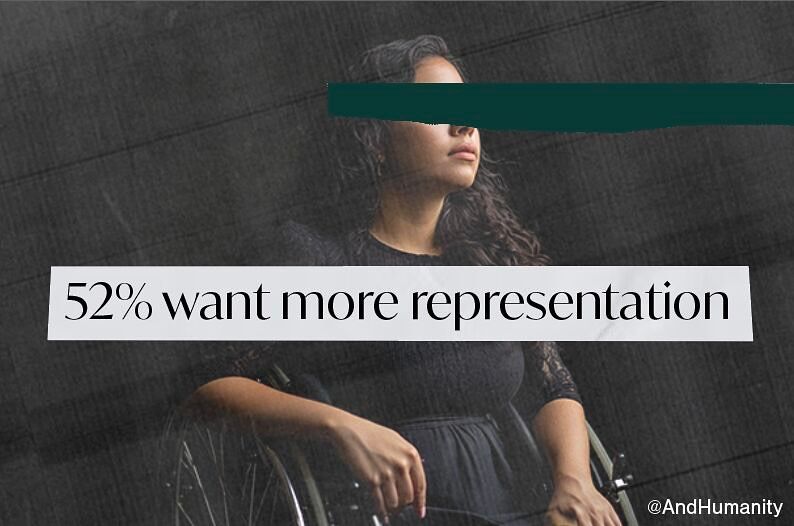As an agency that deals with the unique intersection of equity, inclusion, and marketing and communications, we often encounter a lot of overlap with the questions we receive. Thus, we’ve decided to compile 5 frequently asked questions (and our answers) on this topic. Enjoy!
Question 1:
Q: “With limited resources and capacity, how do we approach dates of significance without being performative? We can’t acknowledge every significant date.”
A: Our answer is simple, but hard to follow-through with; focus on “going deep, not wide.” When you know you cannot meaningfully commit to telling in-depth stories across cultures, communities, and causes, the solution is not to sacrifice these stories and create a high volume of surface-level performative content. Instead, focus on quality over quantity. Commit to fewer underrepresented communities by telling deep, nuanced stories and advocating for them year-round – beyond the dates of significance.
Question 2:
Q: “What are some tips, tricks, and best practices for me to quickly and authentically integrate inclusion into my day-to-day marketing and/or communications work?”
A: Unfortunately, there’s no secret guidebook. No step-by-step instructions and no list of things you should follow or avoid. Inclusion isn’t a checklist. Authentically integrating inclusion into MarComm work is primarily based on understanding the principles of justice, equity, diversity, and inclusion, and then learning how to apply these principles to your MarComm work. This doesn’t mean it can’t be tactical or applicable, it just means it can come in many shapes and forms, requires careful consideration of specific contexts, people, and communities, and is as ever-evolving as JEDI best practices. The best advice we can give for those of you looking to start your learning journey, is to build your own intercultural competency by expanding your circle of influence. Read more about what we mean here.
Question 3:
Q: “Our MarComm department really wants to integrate inclusion, but we are already strapped on resources, time, budget, etc. What can we do?”
A: The first thing to do is reframe your mindset. Inclusion in MarComm needs to be reframed from a “nice-to-have” to a “need-to-have”. All the statistics show that audiences expect brands to be inclusive (non-performatively) and data also shows that this becomes increasingly important with each new generation. So any brands that still frame inclusion as a “nice-to-have” will undoubtedly be left behind. Once you’ve reframed your mindset (which is not an easy task in itself), you’re still stuck with the same lack of time/resources/budget, however, what do you usually do in these scenarios when you have to include something to do your job well? You make time, you make budget, you make resources. This usually requires internal selling and mindset changes as well. Your team/department will have to reprioritize – but you don’t need to do it all at once overnight. It’s always about progress over perfection. Start by making small tweaks; introduce the business case for inclusion to your team/leadership, integrate inclusion as a set of requirements into your briefs and RFPs, integrate inclusive marcomm as a learning topic during lunch and learns or retreats, talk to external experts about accessible Inclusive MarComm milestones for a brand like yours, build your own intercultural competency as mentioned in the last FAQ. There are so many ways to start the journey, but the most important thing is that you do start now.
Question 4:
Q: “How do I ignore or remove my biases when creating content or approaching this work so that at they’re not just reflective of my own personal experiences?”
A: Firstly, it’s great awareness that you know you have biases when approaching anything – but especially work that integrates inclusion practices and principles. Secondly, it’s impossible to remove your biases, many of which are unconscious, and thus the goal is just to manage them. When it comes to MarComm work, the best skill you can learn to manage your biases is the skill of decentering yourself. Without going too in-depth, this is why AndHumanity follows the principle of “nothing about us, without us” –those with lived experience are the experts. Through this approach, we can create and support psychologically safe platforms for underrepresented groups to express themselves. Beyond amplifying those with lived experience, decentering yourself is about truly seeking to understand the lived experiences of the underrepresented, and reflecting before contributing to a discussion. This skill can be especially hard to learn for many types of marketers, who have been taught their whole professional lives that motivating or speaking to those who do not have their own lived experience is what they get paid for. So, it’s a lot of unlearning of conventional methods and replacing them with skills like decentering yourself so that you can learn to effectively facilitate and centre collaboration and community instead of lead.
Question 5:
Q: “How can my content be inclusive of everyone when it’s not realistic to include everyone all the time?
A: Inclusivity is actually not about including everyone all the time. It’s about being purposeful and intentional about who you include and exclude in your work, rather than doing what is typically done, which is consistently defaulting to the dominant lens. Tell “deep” stories, not “wide” ones; focus on cultural nuance – inclusivity in MarComm is all about being specific rather than generalized.
Learn more about what we do and who we do it for on our services page.









